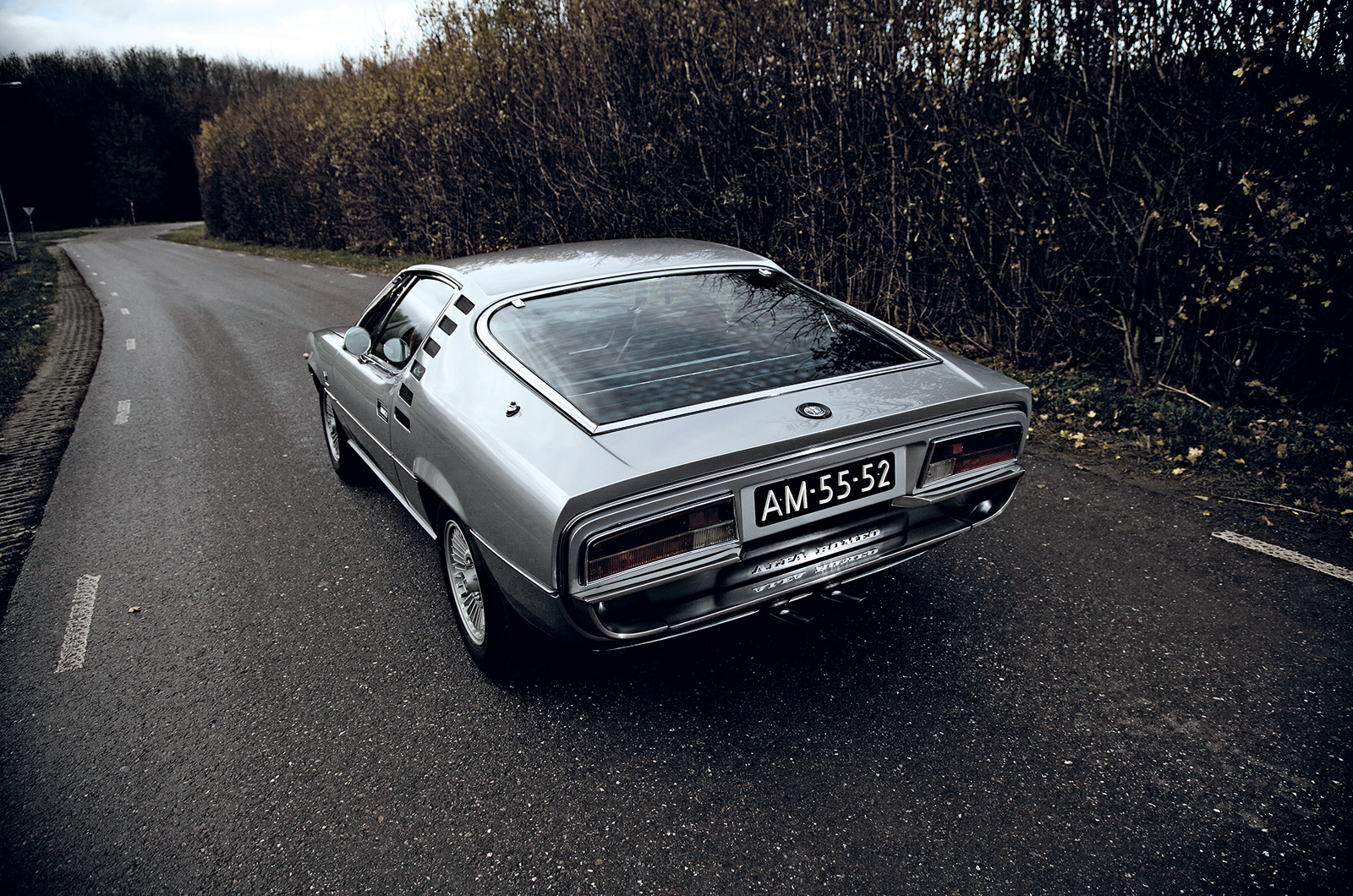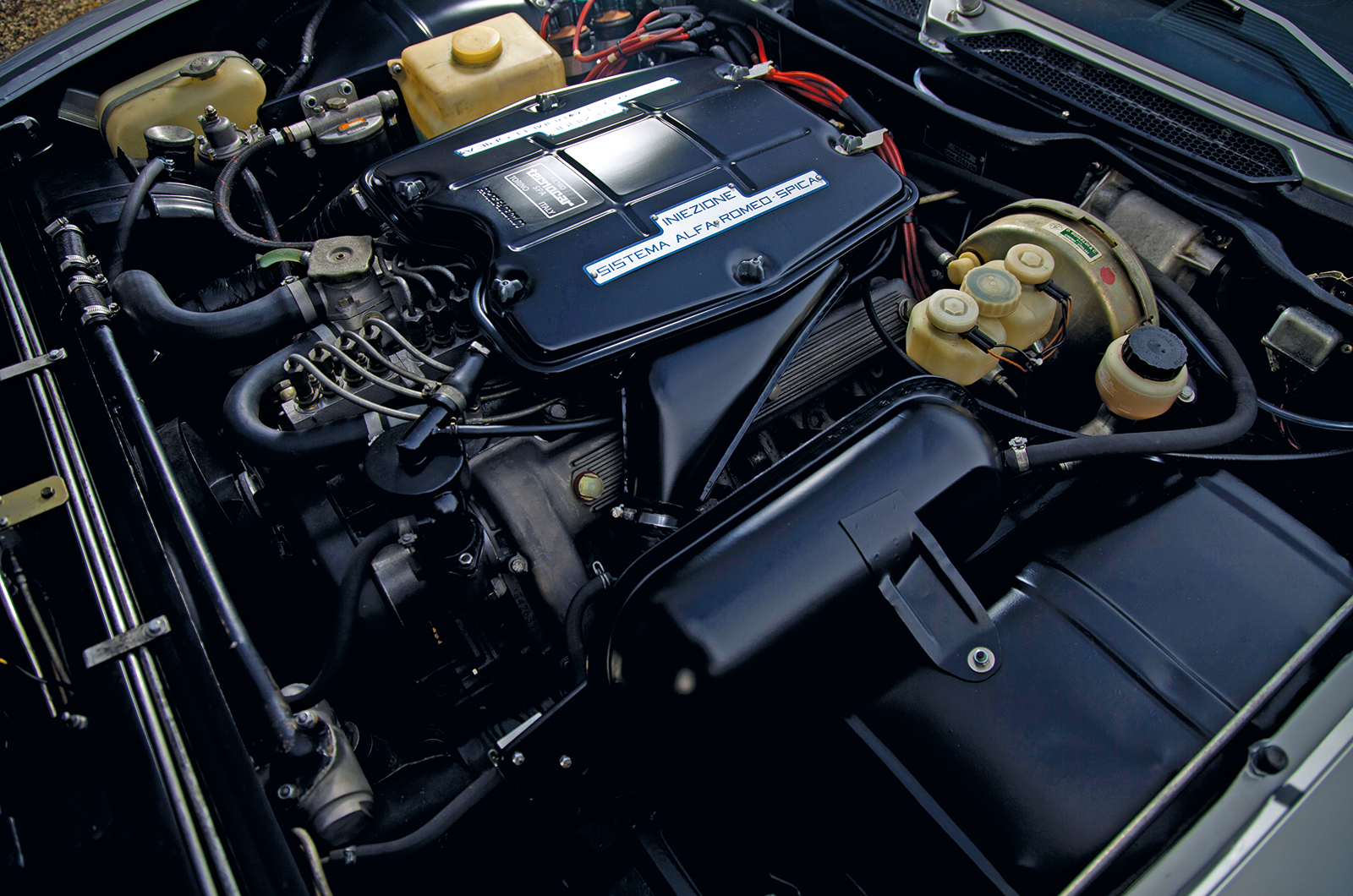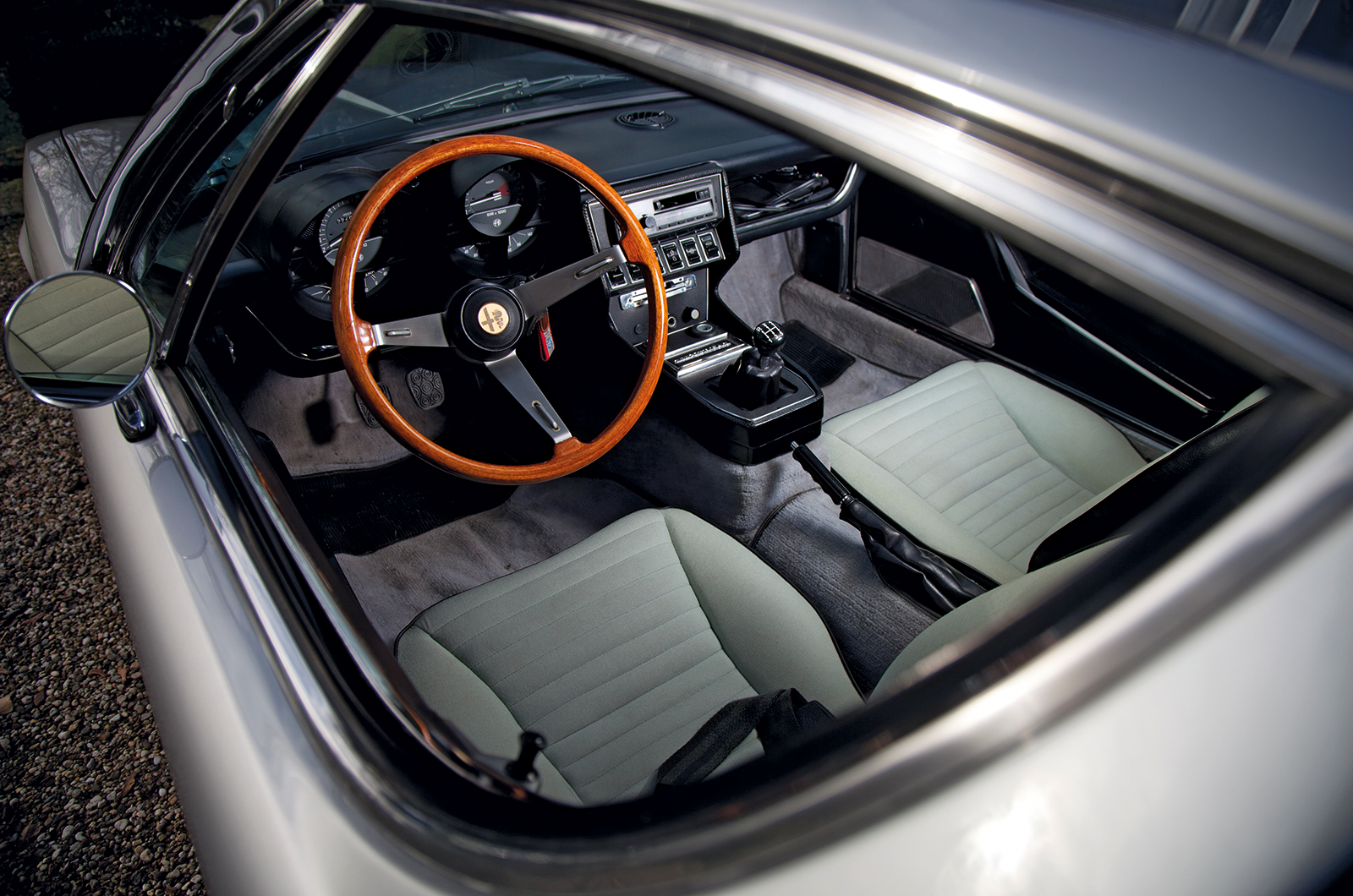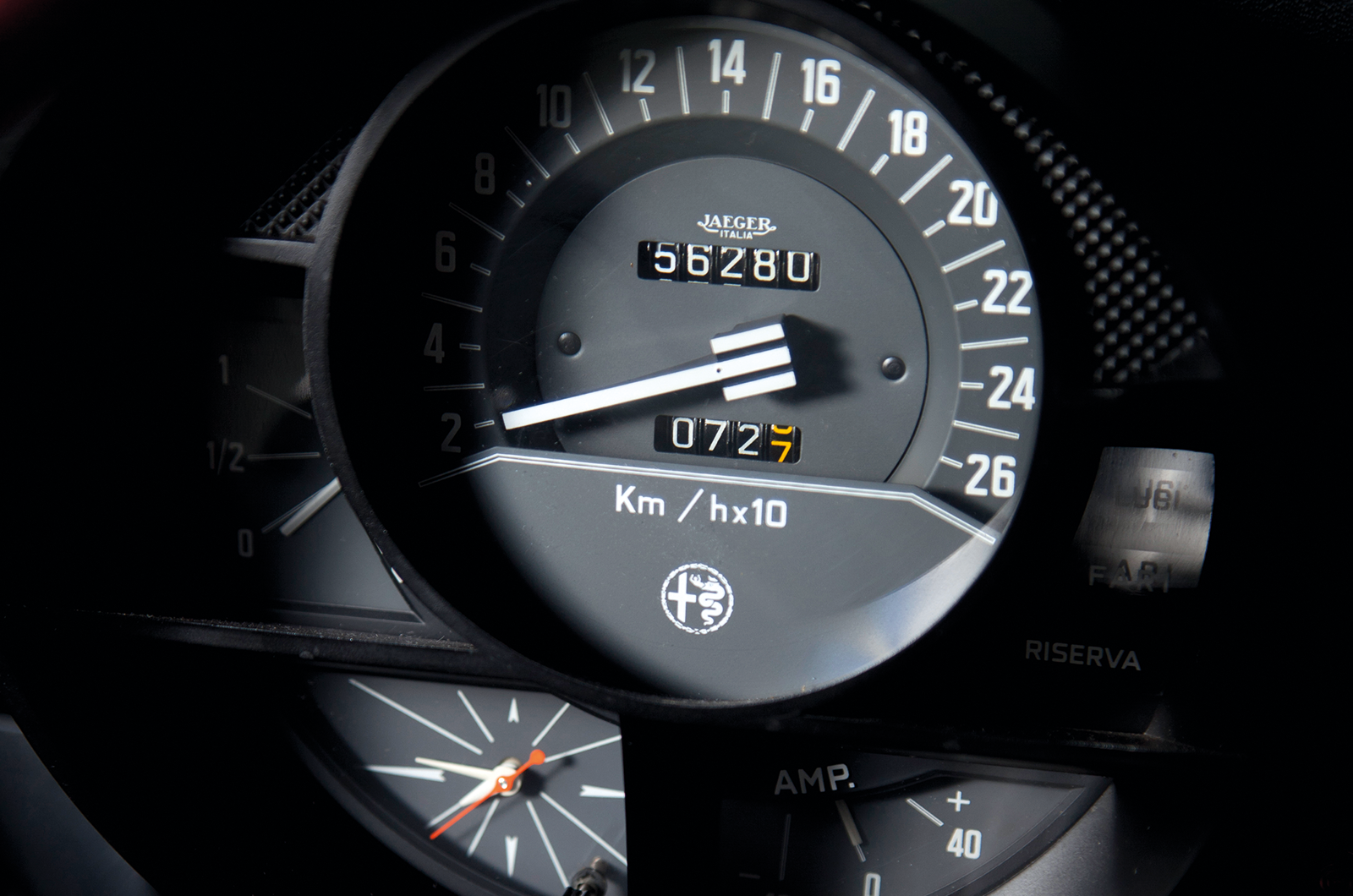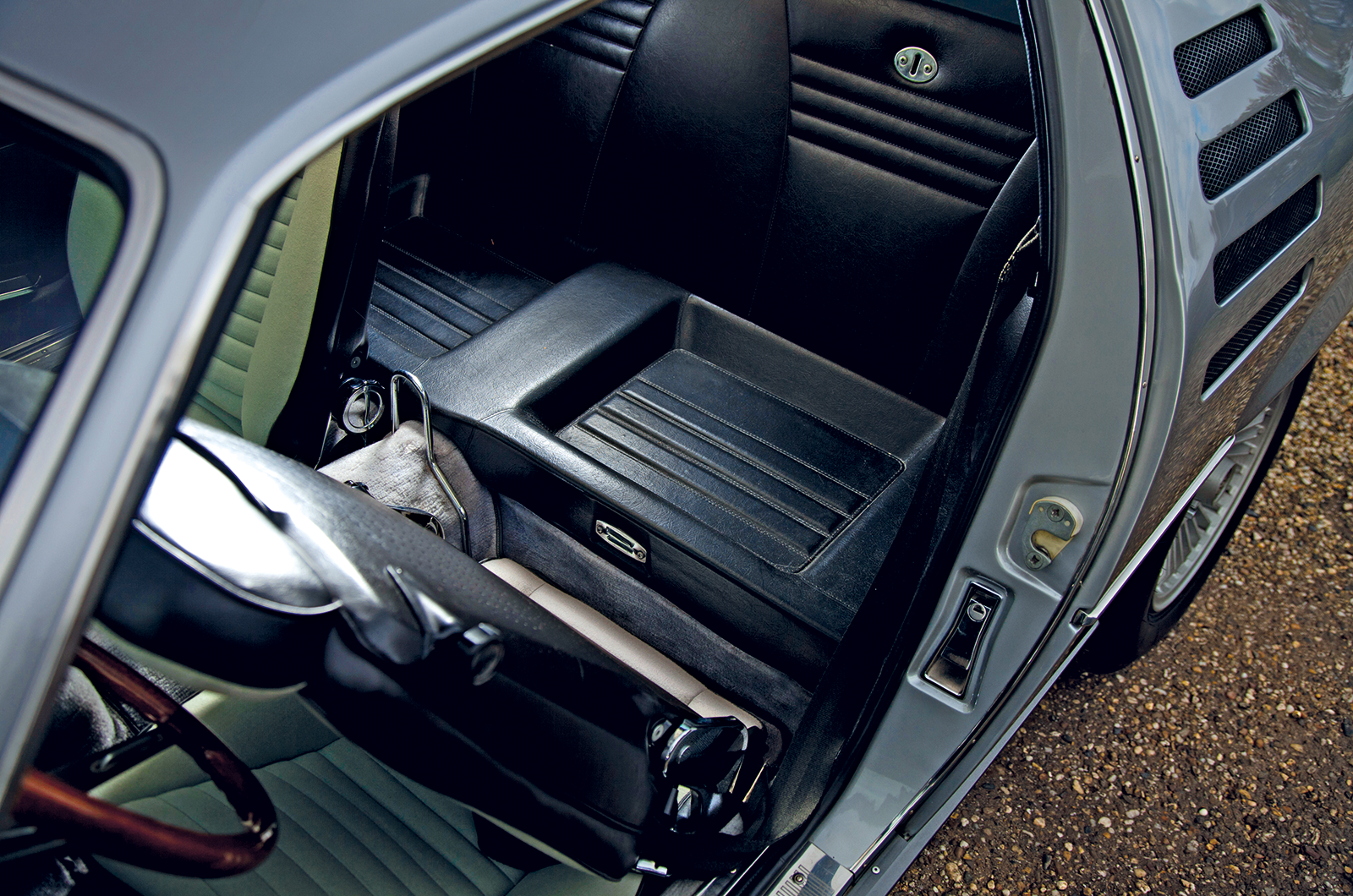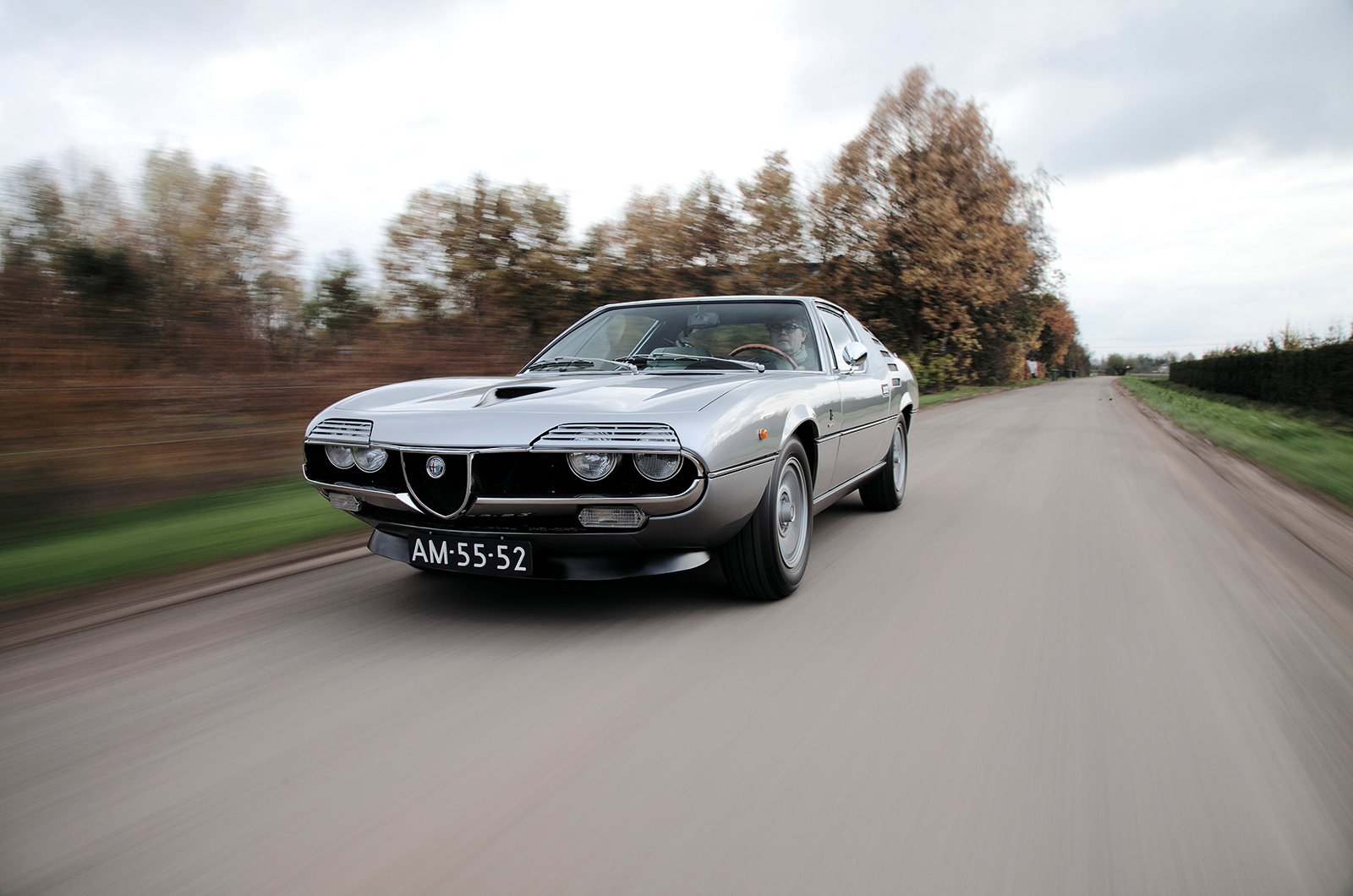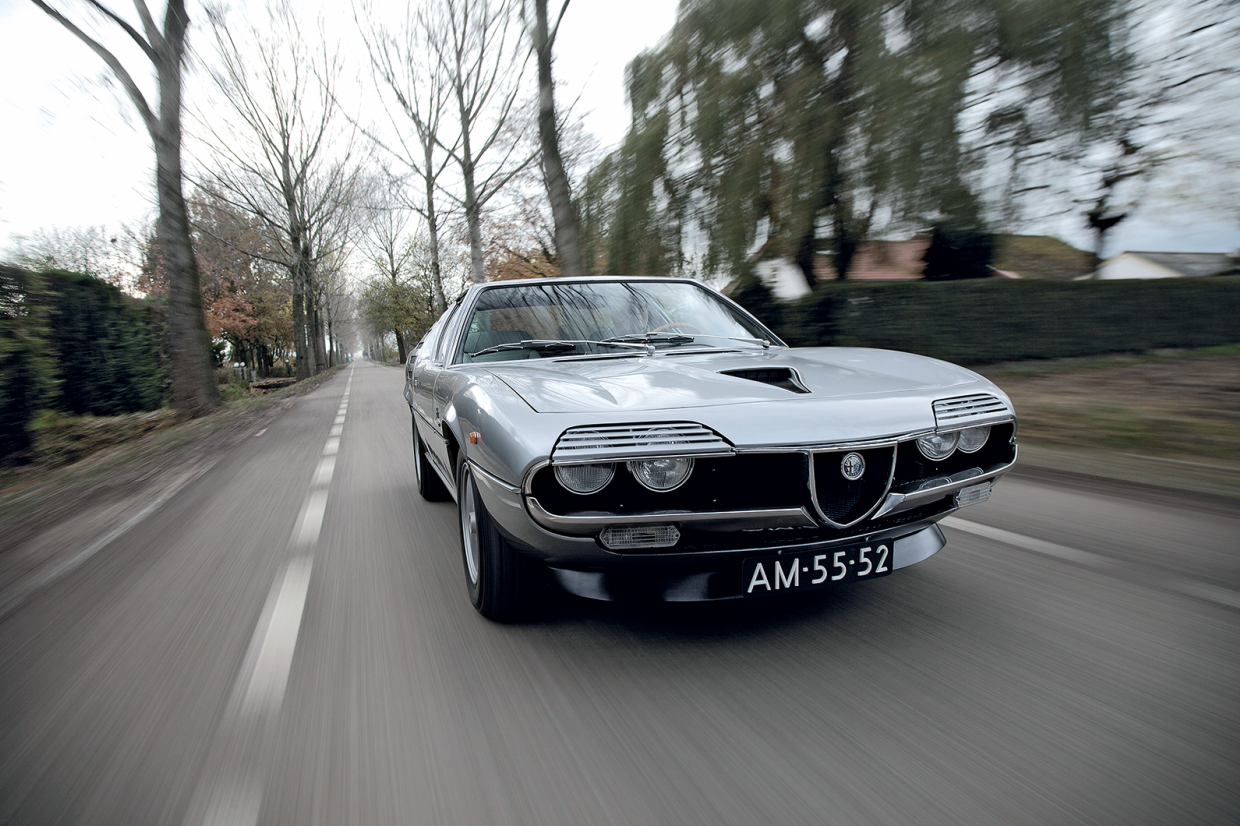
The story of the fabulous yet flawed Montreal is as much about Bertone as it is Alfa Romeo.
In many ways, this car marked the end of a long honeymoon period between the two great houses that had begun in 1954 with the Giulietta Sprint.
I don’t entirely buy the tale about the debut of the Montreal at the 1967 World ’s Fair – it has the unmistakable whiff of PR spin.
The story goes that visitors to the ‘Man the Producer’ pavilion at Expo 67, held in Montreal, Canada, were so awestruck by the car’s appearance that Alfa Romeo felt compelled to put its dream car into production.
My feeling is the Italians knew they were going to build the Montreal in some form or another.
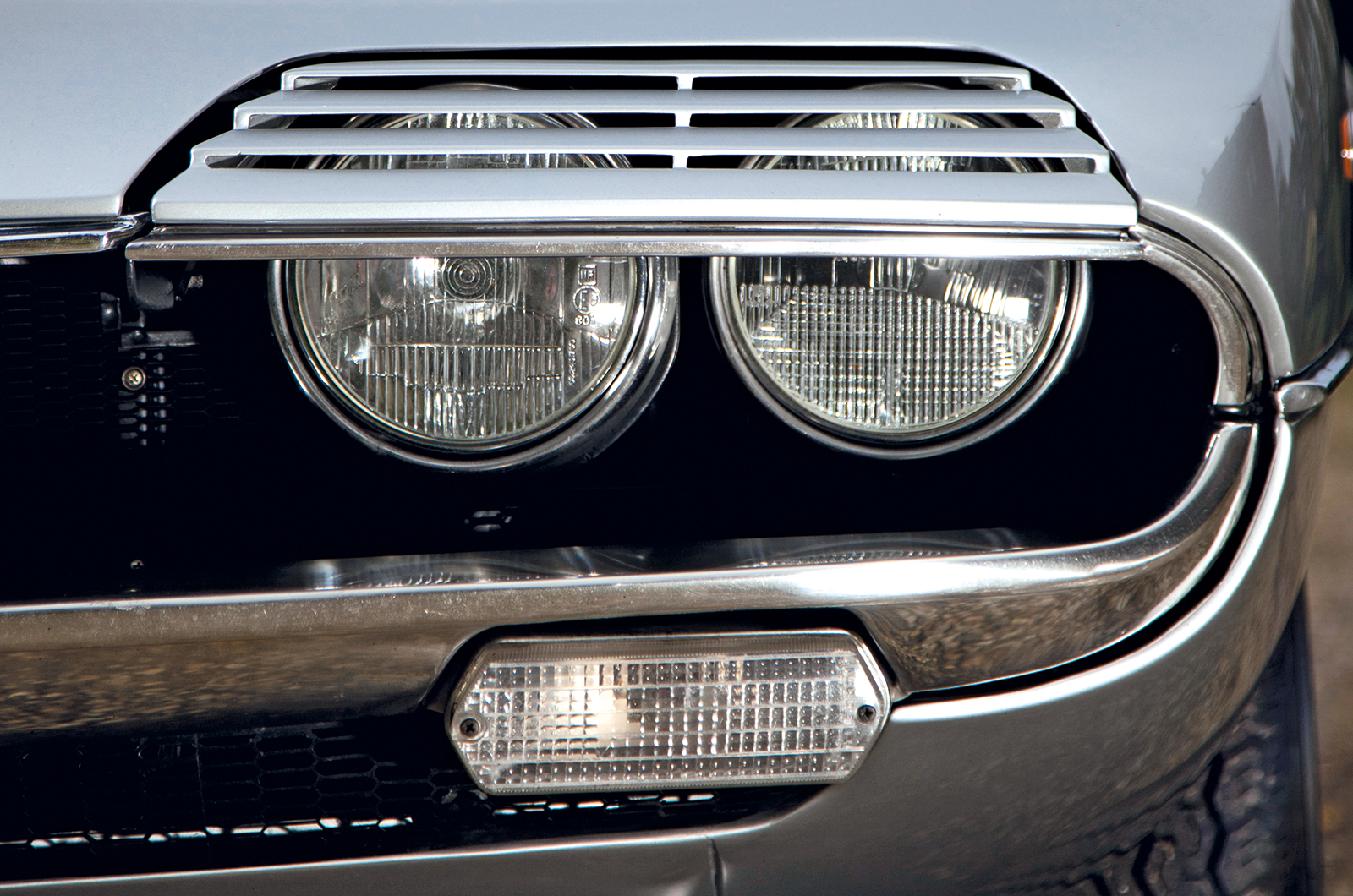
The ‘eyelids’ over the twin headlights are for little more than show, but they do retract
Envious of the success of the Fiat Dino, at least in terms of column inches and reflected glory, the idea of this higher-priced flagship must have seemed rather appealing to Alfa bosses, particularly because there was a pressing need to replace the 2600 Sprint.
Bertone’s shape, created in just nine months for this prestigious event by a 28-year-old Marcello Gandini, was extrapolated from the proportions of his Miura.


